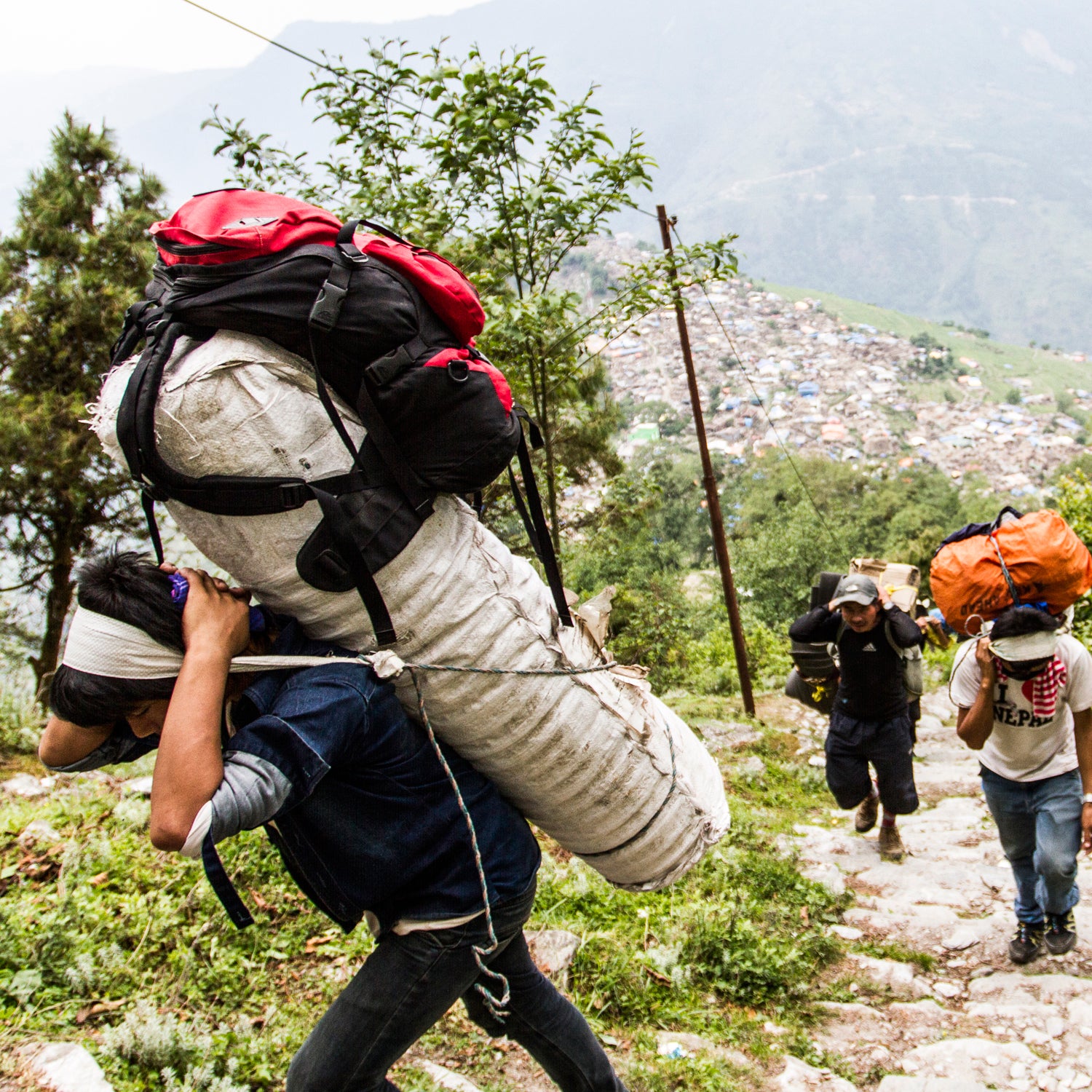Emergency response nonprofit Oxfam has begun employing high-altitude workers to rebuild and supply aid to remote villages in the Khumbu Valley—the region Everest climbers pass through on their way to the mountain—that were devastated by the April 25 earthquake in Nepal, the organization told ���ϳԹ���.
Oxfam has hired 36 Nepalese mountain guides and porters at Laprak village in the Gorkha district, where 90 percent of homes were destroyed, according to the organization’s humanitarian press officer, Lauren Hartnett. These are guides who make their living carrying supplies through the Khumbu to various trekking and climbing destinations, like Everest Base Camp, for private outfitters.
Oxfam is paying porters the market rate of 1,200 Nepalese rupees, about $12, per day. By contrast, porters employed by private outfitters to haul gear and supplies through the treacherous Khumbu Icefall between Base Camp and Camp I on Everest are paid $12.50 per trip.
The first team of porters and guides trekked for four hours from Barpak on May 17, carrying 2.5 tons of aid material, such as tarpaulins, hygiene kits, and food, to reach Laprak. Air support there remains limited. The epicenter of the April 25 earthquake was in Barpak, about ten miles away from Laprak.
The effort has so far brought aid to more than 160,000 people in seven of the worst-affected areas in Nepal, according to Harnett. Oxfam’s top priorities are supplying people with safe shelter and helping them protect their livelihoods so they don’t become dependent on foreign aid. Two-thirds of Nepalese rely on small-scale farming for a living. Harnett said Oxfam hopes to supply aid to 400,000 people before monsoon season starts at the end of June. Oxfam expects its relief operation will take three years and cost $56 million. So far, Oxfam has raised almost $50 million.
“Relief must reach remote communities as quickly as possible,” Harnett wrote in an email. “We found that employing porters and mountain guides was a solution that worked for everyone. Porters and mountain guides who struggle finding work have an income, and aid is delivered in a safe and quick way. Their expertise is often fundamental to reach remote communities.”
Oxfam is currently attempting to reach other isolated communities as soon as possible. “We need to keep providing immediate emergency relief to people, and at the same time start supporting them towards long-term recovery,” Harnett wrote. “People need to be able to start rebuilding their lives.”


